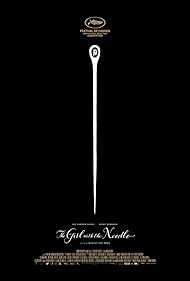She meets Dagmar, who runs an illegal adoption agency
Story
Copenhagen 1919: A young working woman is jobless and pregnant. A strong connection develops, but her world is shattered when she stumbles upon the shocking truth behind her job. Denmark’s official entry for the Best International Feature Film category at the 97th Academy Awards in 2025. It’s the final days of World War I and Karoline is barely making ends meet as a factory worker.
Is it because most people would be working during these hours)?
She considers herself a widow since her husband disappeared during the war (although Denmark wasn’t actually involved), but she doesn’t receive a widow’s pension since he’s not listed as dead. A lot happens over the course of the film and I don’t want to give too much away so I won’t go into detail about the plot, other than to say that the marketing emphasizes something that doesn’t play as big a role in the film as you might expect. Although this gets a lot of attention in the second half of the film, for me the real value of the film lies in the sense of reality that Karoline’s story conveys. When was the last time someone in a film tried to convince a prospective tenant to move into an apartment by telling them that they could have running water for two full hours a day (ten to twelve, which may not be a great selling point)?
When was the rampant drug use of the time portrayed so openly?
Even what Dagmar does was relatively common back then, although I guess the trend had gone down by that time and it wasn’t as common as it used to be. I might even have enjoyed the film more if the marketing had been different and Dagmar hadn’t been mentioned because that would have raised expectations. Even though Dagmar is the main character, the film is clearly about Karoline and her struggles. On the other hand, it’s hard to say how I would have felt about seeing Dagmar Overby’s name on a door if I hadn’t known beforehand that this real person was in the film.
I like the look of the film
(It should be noted that the film is inspired by true events, not based on them, so some distance is attempted to be kept from the real Dagmar.) I think some viewers will find it hard to sympathize with Karoline, as she sometimes seems to make the right decision too late. At the same time, there isn’t much time or opportunity for ethics when you’re simply trying to survive in a world where the odds are stacked against you. Even though we know that the hope she has would be in vain in this world, we still understand why she gives in to it. It’s black and white and the entire town seems run-down and barely holding on.
Have things really changed that much?
It reminds us of the lack of interest in, or even disregard for, the welfare of the working poor. The era depicted was over a century ago, but the concept of female bodily autonomy is again under constant attack. Of course, all art is in some way a reflection of the time in which it was created, but here it seems easier to see the similarities.




 46/30
46/30